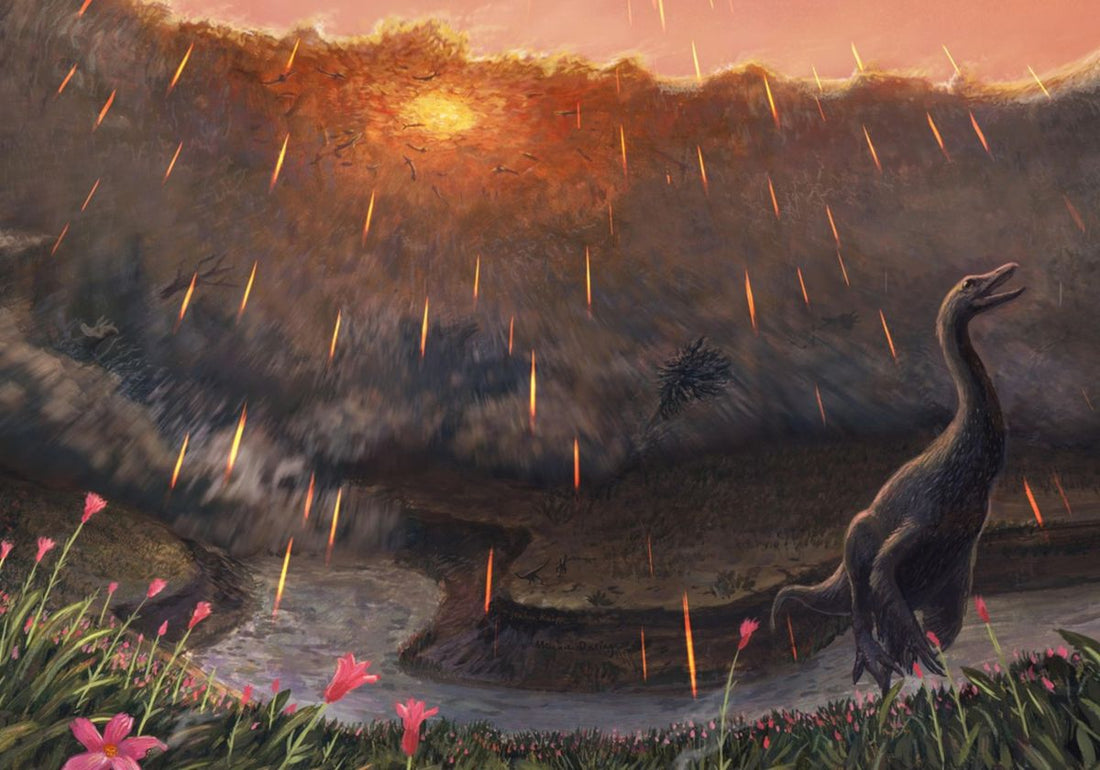
Dinosaur Death Post-Asteroid Was More Brutal Than You Know
Share
Researchers have discovered that when the dinosaur-destroying asteroid collided with Earth 66 million years ago, large amounts of sulphur - volumetrically larger than previously thought - was thrown high above land into the stratosphere.
This vast cloud of sulphur-bearing gases blocked the Sun and cooled the Earth for decades to centuries, and on Earth, it formed lethal acid rain which changed the chemistry of the oceans for tens of thousands of years, which is longer than previously thought, the study concluded.
Study co-researcher James Witts, a lecturer in the School of Earth Sciences at the University of Bristol in the UK, told Live Science that the study shows that "we underestimated the amount of sulphur that this asteroid impact created."
As a result, "the climate change that was associated with it was much greater perhaps than we thought previously".
Witts explained that the fact that sulphur continued to fall on Earth's surface for so long may have contributed to the delay in life recovering, since some of the sulphur that fell on the land may have been washed into the oceans.

Unintentional Discovery
The findings by the researchers were entirely coincidental. "It was not something that was planned at all," Witts said.
In the original plan, the team had planned to study the geochemistry of ancient shells near the Brazos River in Falls County, Texas - an area that was submerged during the end Cretaceous extinction, during which non-avian dinosaurs became extinct.
It's also not too far from the Chicxulub crater in Mexico's Yucatan Peninsula, where the 10 kilometres wide asteroid struck.
Researchers took a few sediment samples at the site that they had not intended to take.
Aubrey Zerkle, a geochemist and geobiologist from the University of St Andrews in Scotland, analyzed the different sulphur isotopes, which differ in the number of neutrons in their nuclei.
Witts said the researchers found "a very unusual signal" - the sulphur isotopes had unexpectedly tiny changes in their masses. When UV light interacts with sulphur in the atmosphere, mass changes occur.
"That can really only happen in two scenarios: either in an atmosphere that doesn't have any oxygen in it or when you have so much sulphur, it's gone really high up into an oxygenated atmosphere," Witts said.
Earth is approximately 4.5 billion years old, and since about 2.3 billion years ago, it has been enveloped by an oxygenated atmosphere.
"We're the first people to see this sort of thing in much more recent times," at least in sediments that aren't on the Earth's poles, Witts said.
(This is because volcanic eruptions release sulphur high into the atmosphere, which can mix with snow and end up in high concentrations in ice cores at the poles, where there is no other sulphur or sulphate to dilute the signal, Witts says.)
"You don't see [this signal] in marine rocks," he said. "The sea has its own isotopic signature which totally dilutes the tiny amount of sulphur from these volcanoes."
Witts said that the fact that this signal can be found in marine rock from the Cretaceous indicates that the atmosphere must have been thick with sulphur after the impact event.
"And that, of course, has a huge implication for climate change related to the impact because sulphur aerosols, we know from modern volcanic eruptions, cause cooling."
Sulphur was primarily derived from sulphur-rich limestone on the Yucatan Peninsula.

"If the asteroid had hit somewhere else, perhaps there wouldn't have been as much sulphur released into the atmosphere and the climate change that followed might not have been as severe," Witts said. "And therefore the extinction event might not have been so bad."
As a result of the asteroid impact, estimates of sulphur aerosols entering Earth's atmosphere range between 30 and 500 gigatons; according to climate models, this sulphur would have turned into sulphate aerosols, which would have caused a cooling of the Earth's surface for a few decades after the impact.
The new findings suggest, however, that because the sulphur content was higher, the climate change may have been even more severe.




